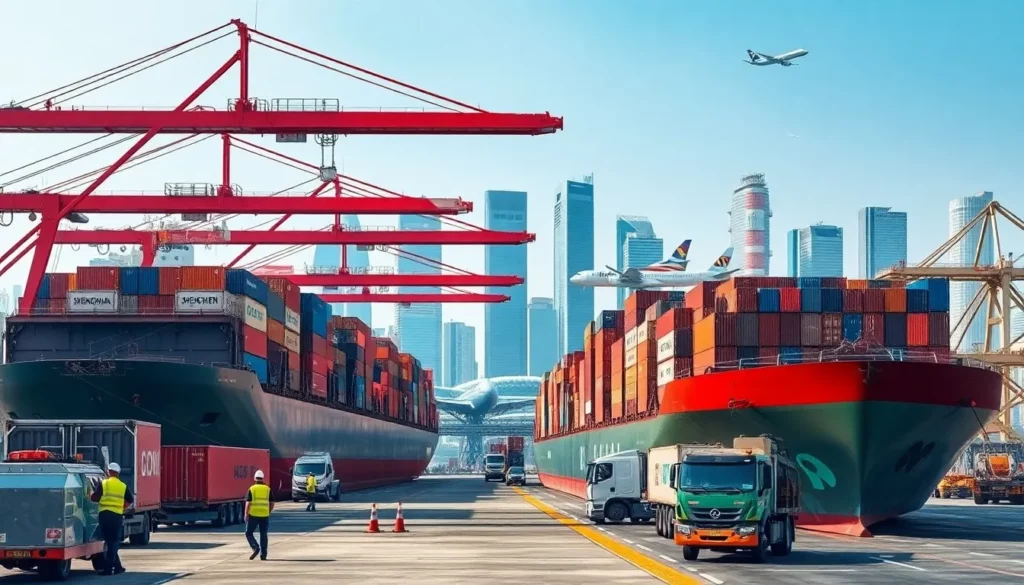You can streamline your import operations and cut costs by mastering shipping from China to Singapore. This guide walks you through selecting the best shipping methods, calculating total costs, and navigating customs regulations for smooth trade between these key markets.
Most Important: Partnering with a trusted China freight forwarder simplifies logistics with services like sea freight, air freight, and customs clearance. Look for providers with deep experience in the Singapore trade lane and advanced technology for real-time tracking and efficiency.
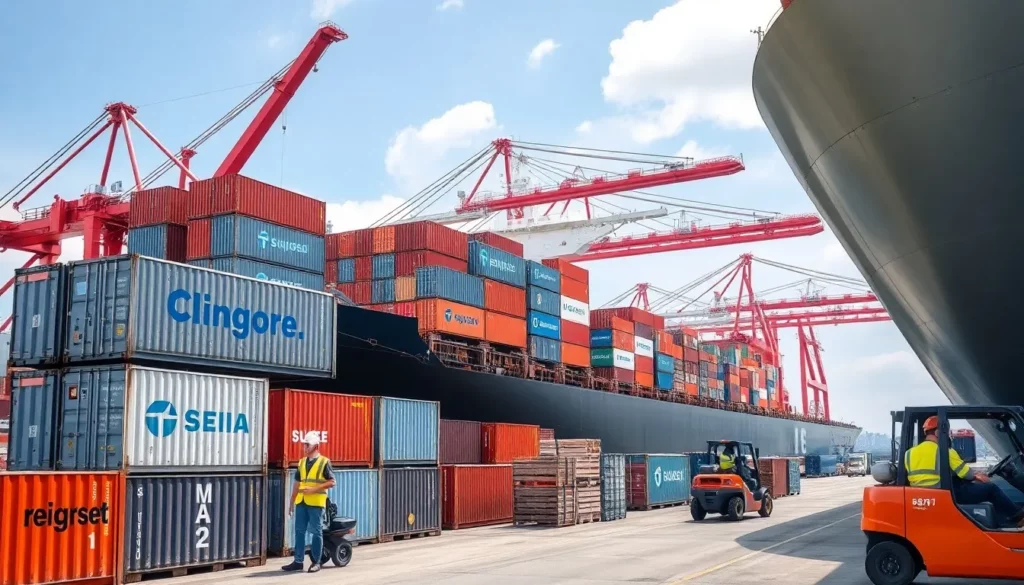
Shipping Method
Sea Freight: Cost-Effective for Bulk Shipments
Sea freight is your go-to for moving large volumes from China to Singapore, leveraging robust port connectivity and Singapore’s world-class maritime infrastructure.
Full Container Load (FCL): Ideal for High-Volume Shipments
With FCL, you get a dedicated container, ensuring better security and faster transit. Expect costs of $450–$950 for a 20-foot container or $850–$1,500 for a 40-foot container, depending on the origin port.
- Best for: Shipments filling 8–10 pallets (20-foot) or 20–22 pallets (40-foot).
- Advantages: Full control over cargo space, no delays from other shippers.
Example: A furniture retailer shipping 20 pallets of tables benefits from FCL’s security and predictable costs.
Less than Container Load (LCL): Flexible for Smaller Shipments
LCL lets you share container space, perfect for smaller loads. Rates range from $30–$75 per cubic meter (CBM), offering savings when you can’t fill a full container.
- Best for: Businesses with irregular volumes or testing new products.
- Trade-off: Slightly longer transit due to consolidation processes.
Example: An e-commerce startup shipping 5 CBM of apparel uses LCL to minimize costs while entering Singapore’s market.
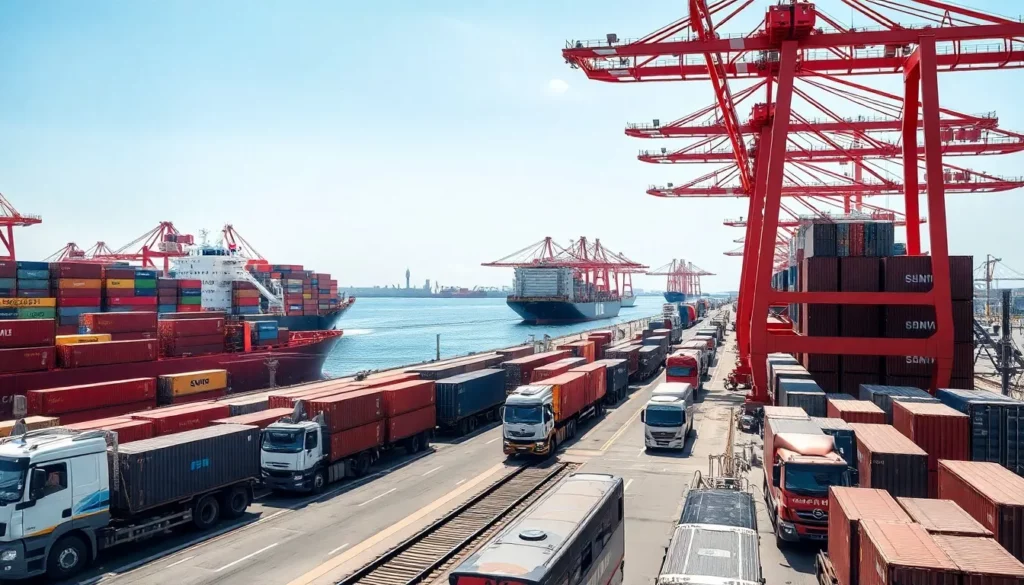
Key Chinese Ports for Singapore Routes
Major ports like Shanghai, Shenzhen, Ningbo, and Guangzhou offer direct services to Singapore. Shanghai provides frequent sailings with LCL rates of $35–$65 per CBM, while Shenzhen offers rates from $30–$60 per CBM.
| Port | Region Served | LCL Rates (per CBM) | Sailing Frequency |
|---|---|---|---|
| Shanghai | Yangtze River Delta | $35–$65 | Daily |
| Shenzhen | South China | $30–$60 | 4–5x weekly |
| Ningbo | Yangtze River Delta | $35–$65 | 3–4x weekly |
| Guangzhou | Pearl River Delta | $40–$70 | 3–4x weekly |
Sea Freight Transit Times
Port-to-port transit takes 7–14 days, with door-to-door adding 3–5 days for inland transport and customs. Peak seasons or congestion may extend timelines by 2–3 days.
- Tips: Plan for weather or peak season delays to avoid disruptions.
- Example: A retailer shipping holiday inventory schedules early to account for potential port congestion.
Who Benefits Most from Sea Freight?
Sea freight suits large retailers, manufacturers, and e-commerce brands with predictable demand. It’s ideal for non-urgent shipments where cost savings outweigh speed.
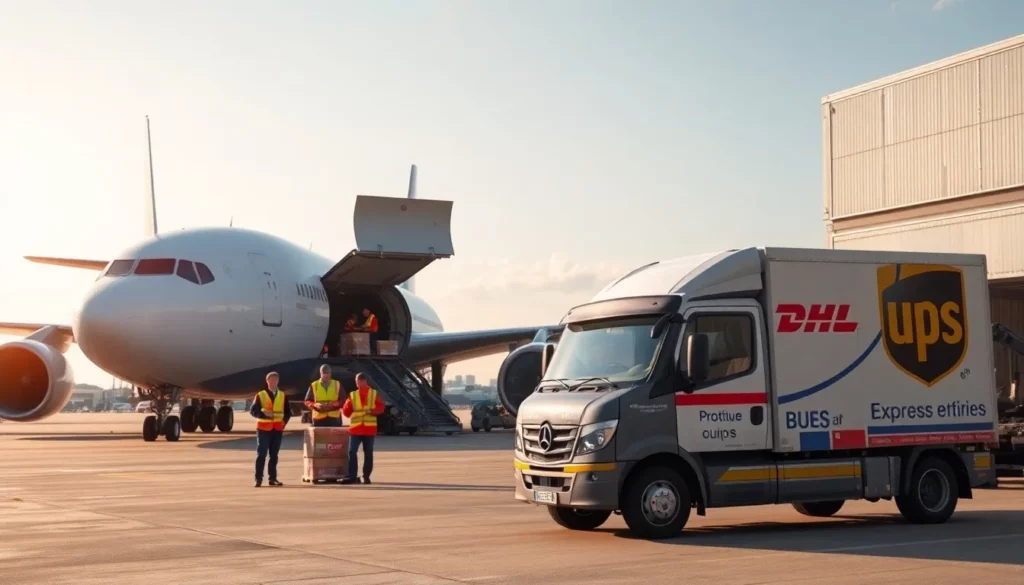
Air Freight: Speed and Security for High-Value Goods
Air freight delivers in 1–3 days, perfect for time-sensitive or high-value cargo. Standard rates average $2.10 per kg, while express services range from $3.65–$15.73 per kg.
Standard vs. Express Air Cargo
Standard air freight balances cost and speed, while express options (DHL, FedEx, UPS) ensure 1–2 day delivery with tracking and guarantees.
- Standard: Economical for less urgent needs.
- Express: Prioritizes speed for critical shipments.
Example: A tech company uses express air to ship prototype chips for a Singapore trade show.
When Air Freight Makes Financial Sense
Air freight pays off when inventory costs, stockouts, or market opportunities outweigh transport expenses. High-value electronics or perishables often justify the premium.
- Key takeaways: Compare total cost of ownership (inventory, storage, opportunity costs) to sea freight.
- Example: A fashion brand air-ships limited-edition sneakers to meet a launch deadline, avoiding lost sales.
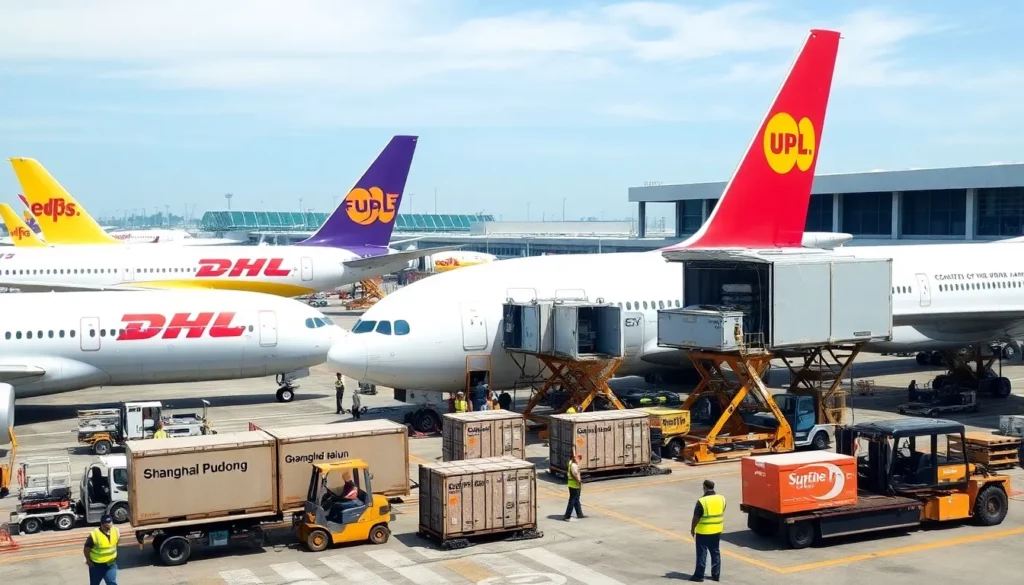
Major Air Cargo Hubs
Singapore’s Changi Airport handles over 2 million tons yearly, connecting with Shanghai Pudong, Guangzhou Baiyun, and Shenzhen Bao’an for direct flights.
Air Freight Transit Times and Delays
Standard air freight takes 2–3 days, express delivers in 1 day. Delays may stem from customs, weather, or peak season capacity issues.
- Tips: Book early during peak seasons to secure space.
- Example: A medical supplier uses express air to avoid delays for urgent surgical equipment.
Who Benefits Most from Air Freight?
Tech firms, automotive manufacturers, startups, and fashion retailers rely on air freight for high-value or time-critical goods.
Express Courier Services: Perfect for Small, Urgent Shipments
Express couriers (DHL, FedEx, UPS) excel for documents, samples, or packages under 70kg, offering door-to-door delivery with tracking.
Comparing Major Carriers
| Carrier | Delivery Time | Weight Limit | Starting Rate (SGD/kg) |
|---|---|---|---|
| DHL | Next-day | 70kg | $9 |
| FedEx | 2 days | 150kg | $8.50 |
| UPS | 2–3 days | 150kg | $8 |
- Tips: Negotiate volume discounts for frequent shipments.
- Example: An e-commerce seller uses DHL to ship product samples to Singapore buyers.
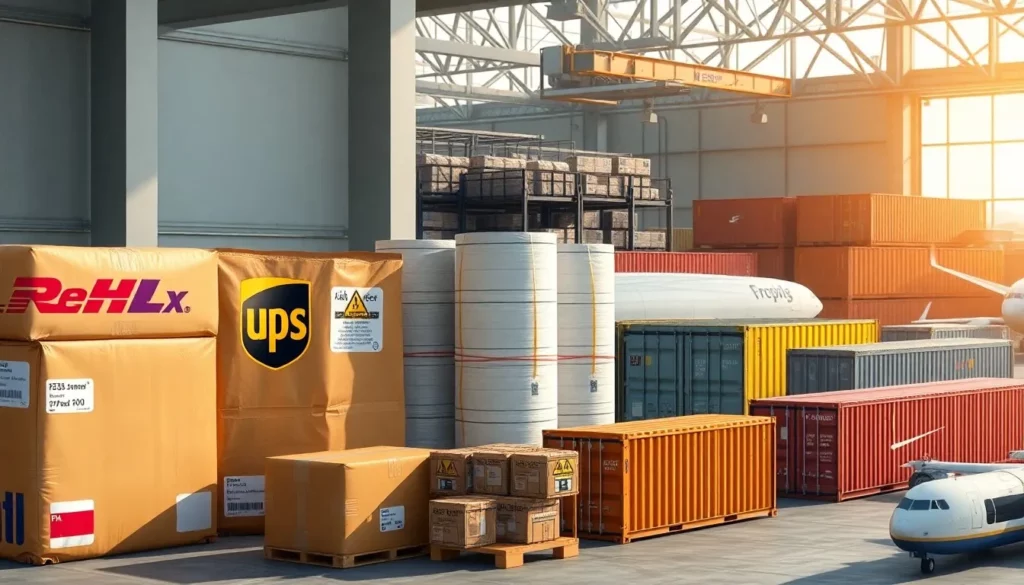
Weight, Size, and Value Limits
DHL caps packages at 120cm x 60cm x 60cm (70kg), while FedEx and UPS allow up to 300cm length plus girth (150kg). Volumetric weight often increases costs for low-density goods.
- Important warnings: Check volumetric weight to avoid unexpected charges.
- Example: A textile exporter pays higher rates for bulky fabrics due to volumetric weight.
Door-to-Door for E-commerce and Samples
Express services handle customs clearance, taking 1–3 days in Singapore, streamlining processes for e-commerce and B2B samples.
Handling Special Cargo
Dangerous Goods (e.g., Batteries)
Lithium batteries require specific packaging and documentation. Air freight has stricter rules, while sea freight offers more flexibility with proper declarations.
Important warnings: Non-compliance risks shipment rejection or fines.
Oversized or Out-of-Gauge (OOG) Cargo
OOG cargo needs specialized equipment, increasing costs. Sea freight accommodates most OOG, while air freight has tight size limits.
Temperature-Controlled Shipments
Reefer containers or air cargo services ensure product integrity for perishables, though at a premium cost.
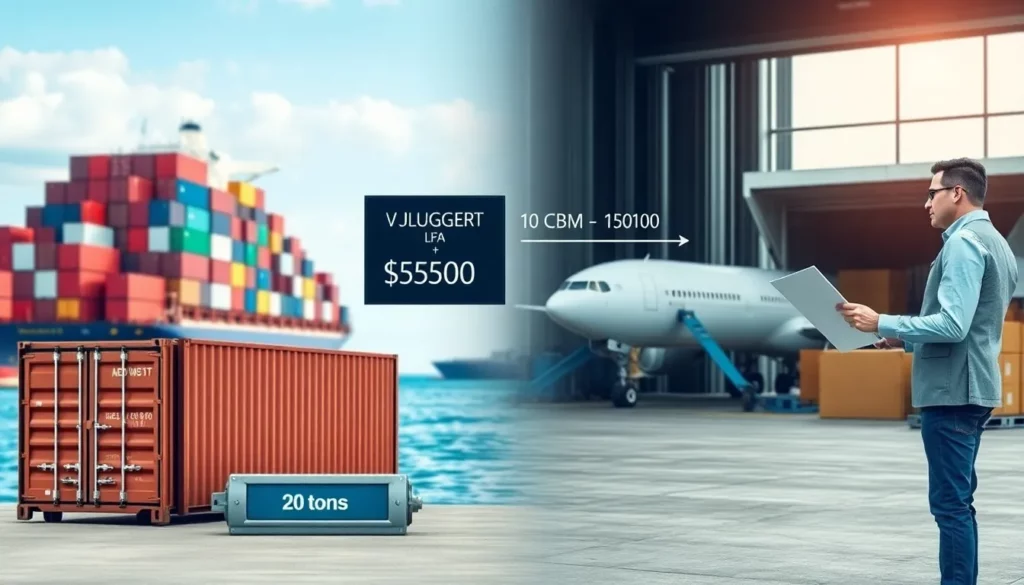
Breaking Down Total Shipping Costs
Core Freight Charges
Sea Freight Rate Calculations
Sea freight uses the higher of cubic meters (CBM) or weight tons. LCL costs $30–$75 per CBM, while FCL offers fixed rates for full containers.
- Example: A 10 CBM LCL shipment costs $500, while a dense 20-ton shipment may cost more based on weight.
Air Freight Rate Calculations
Air freight charges the higher of actual or volumetric weight (length x width x height ÷ 6000). Low-density goods like textiles face higher volumetric charges.
Getting Accurate Quotes
Request all-inclusive quotes covering surcharges, handling, and documentation. Compare like-for-like services for transparency.
Best practices: Work with forwarders who provide detailed cost breakdowns.
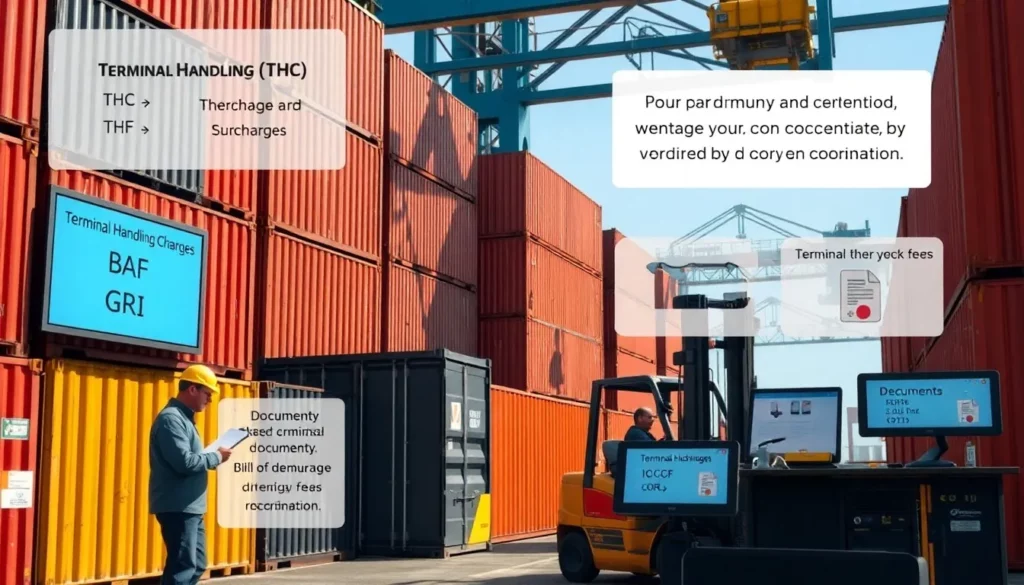
Ancillary Fees and Surcharges
Terminal Handling Charges (THC)
Expect $150–$300 per container in China and Singapore. LCL shipments add $50–$150 for consolidation fees.
Common Surcharges
- BAF (Bunker Adjustment Factor): Adjusts for fuel cost changes.
- PSS (Peak Season Surcharge): Applies during high-demand periods.
- GRI (General Rate Increase): Reflects market rate adjustments.
- CAF (Currency Adjustment Factor): Accounts for exchange rate shifts.
Important warnings: Surcharges can add 15–30% to base rates.
Documentation Fees
Fees for bills of lading or certificates of origin range from $50–$150. Electronic documents save costs compared to paper.
Avoiding Demurrage and Detention
Demurrage applies for containers left at terminals beyond 3–7 days; detention accrues for delayed consignee returns. Plan pickups and clearances tightly.
Best practices: Coordinate with brokers to expedite clearance and avoid fees.
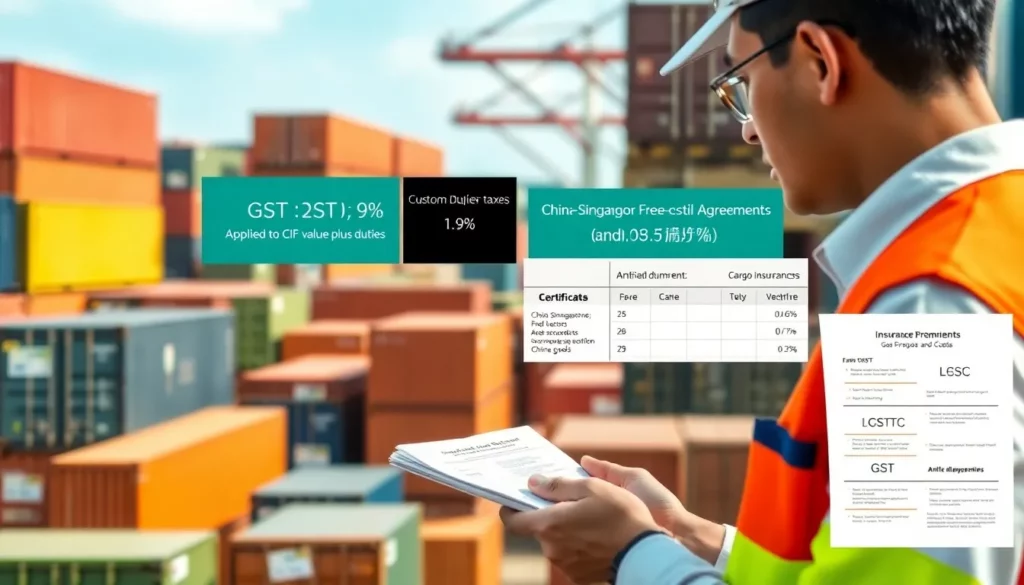
Singapore’s Customs Duties and Taxes
Classifying Products with HS Codes
Use Singapore’s 8-digit AHTN system for accurate duty classification. Misclassification risks penalties or delays.
Tips: Consult customs brokers or Singapore Customs’ database for correct codes.
Calculating GST
Apply 9% GST to the CIF value plus duties. For non-dutiable goods, GST is simply CIF value x 9%.
Using the China-Singapore Free Trade Agreement (CSFTA)
The upgraded CSFTA (effective December 31, 2024) eliminates duties on qualifying goods. Secure Certificates of Origin to claim benefits.
Anti-Dumping Duties
Monitor Singapore’s anti-dumping measures on certain Chinese goods to avoid unexpected costs.
Cargo Insurance Costs
Insurance premiums cost 0.1–0.3% of CIF value plus 10%. All-risk coverage offers broader protection than named perils but at a higher cost.
Key takeaways: Choose coverage based on cargo value and risk tolerance.
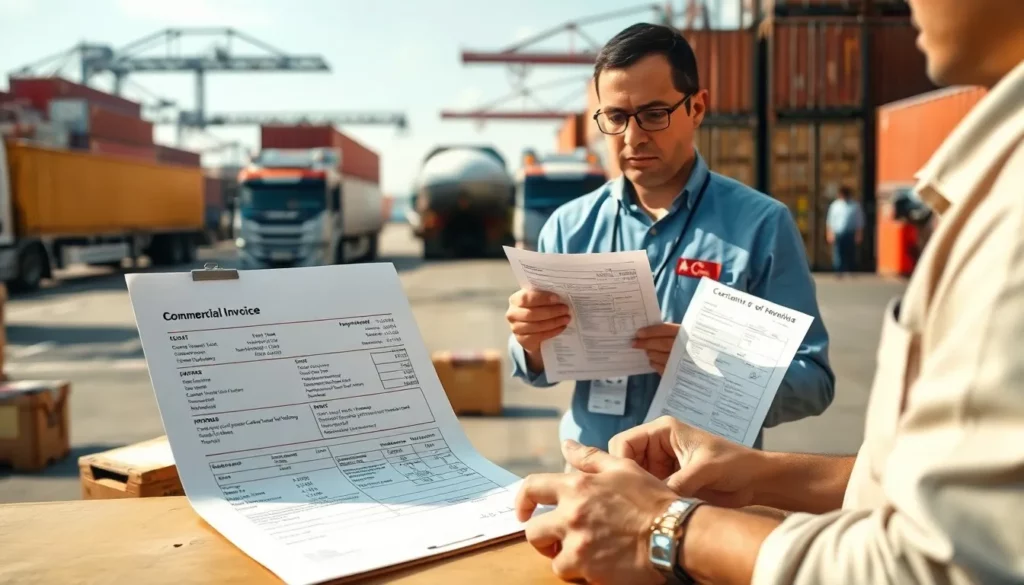
Customs and Compliance
Essential Documentation Checklist
- Commercial Invoice: Detail products, quantities, values, and supplier/consignee info.
- Packing List: Specify package contents, weights, and dimensions.
- Bill of Lading (B/L) or Air Waybill (AWB): Proves ownership and enables cargo release.
- Certificate of Origin (CO): Verifies origin for CSFTA benefits.
- Permits: Required for regulated goods (e.g., HSA for medical devices, SFA for food).
Important warnings: Inaccurate documents delay clearance.
Singapore’s Import Procedures
Customs Clearance via TradeNet
Submit permits (S$2.88 each) through TradeNet with accurate HS codes and cargo details. Use licensed declaring agents or in-house systems.
Role of Customs Brokers
Brokers ensure compliance, prepare documents, and coordinate with authorities, saving time and avoiding errors.
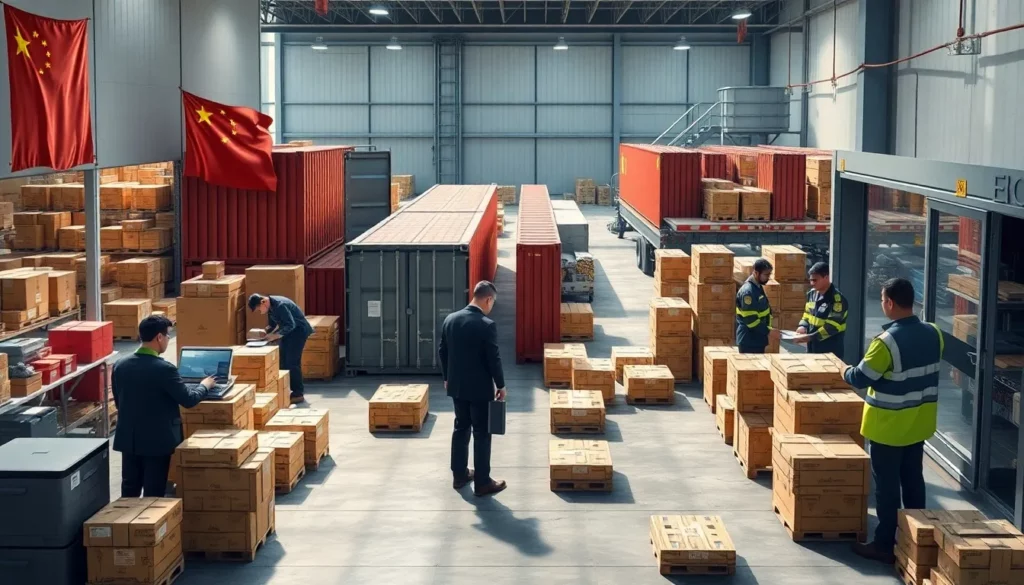
Managing Inspections
Customs inspections may add 1–3 days. Accurate documentation reduces inspection risks.
Cargo Release and Port Clearance
Pay duties and GST, then arrange port pickup with delivery orders. Coordinate trucking for smooth final delivery.
Ensuring Compliance
China’s Export Requirements
Submit accurate export declarations and secure licenses for controlled goods. Experienced forwarders simplify compliance.
Singapore’s Prohibited and Restricted Goods
Narcotics, firearms, and certain agricultural products are banned; restricted items need permits. Review lists before shipping.
Product Safety and Quality Standards
Ensure products meet Singapore’s standards to avoid rejections. Verify compliance during sourcing.
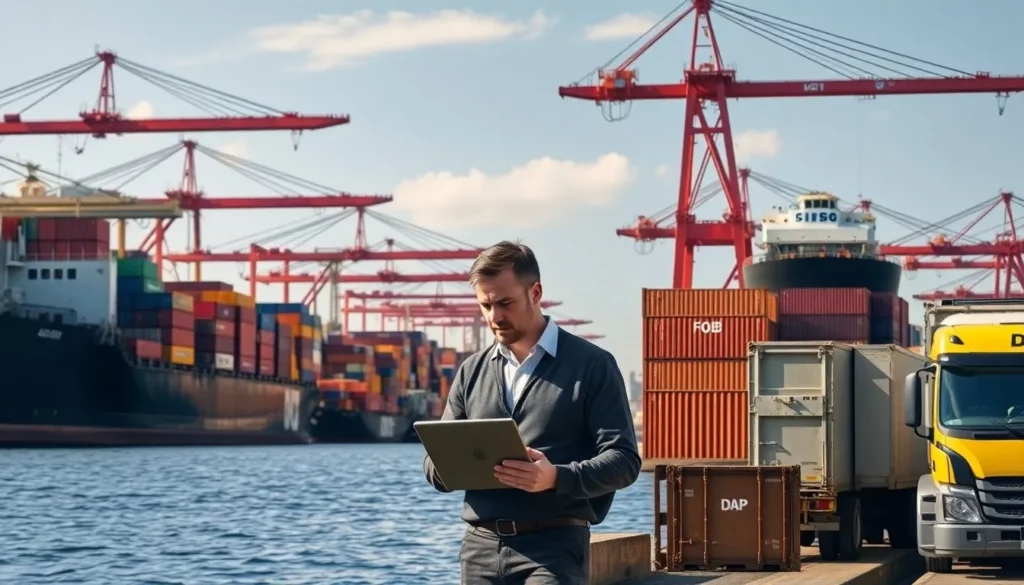
Building a Resilient Supply Chain
Choosing the Right Incoterms
Common Incoterms Explained
| Incoterm | Seller Responsibility | Buyer Responsibility | Best for |
|---|---|---|---|
| EXW | Minimal; factory pickup | All logistics | Experienced importers |
| FOB | Export clearance | Sea freight, import | Large importers |
| CIF | Shipping, insurance | Import duties | Cost-conscious buyers |
| DAP | Door-to-door transport | Import duties | Manufacturers |
| DDP | All costs, duties | None | E-commerce, new importers |
Example: A small e-commerce seller chooses DDP for predictable costs and simplicity.
Risk and Cost Allocation
Incoterms define when risk and costs transfer. Align terms with your logistics expertise and risk tolerance.
Recommended Incoterms by Segment
- E-commerce: DDP for simplified operations.
- Large importers: FOB for freight control.
- Manufacturers: DAP for just-in-time delivery.
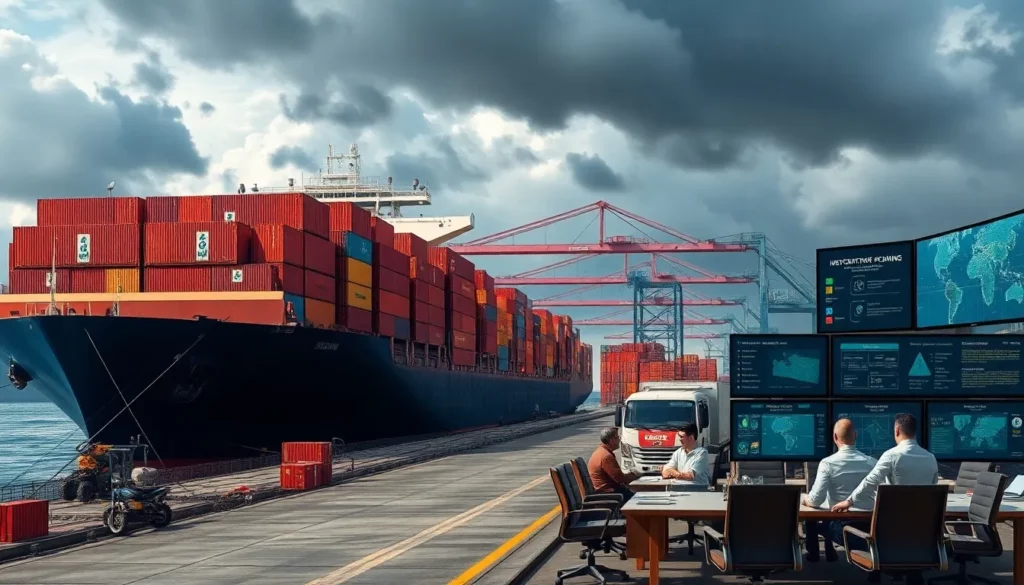
Risk Management and Contingency Planning
Importance of Cargo Insurance
Insurance protects against loss or damage, costing 0.1–0.3% of cargo value. All-risk policies suit high-value goods.
Preparing for Disruptions
Plan for typhoons, congestion, or strikes with buffer inventory and alternative routes.
Best practices: Monitor port conditions and maintain multiple carrier relationships.
Communication with Forwarders
Set clear communication schedules and escalation protocols. Backup plans with alternative providers add resilience.
Leveraging Technology
Real-Time Tracking
Use GPS, RFID, or IoT for shipment visibility. Cloud platforms and mobile apps keep you informed.
Optimizing with Data
Analyze transit times and costs to refine carrier selection and inventory planning.
Example: Data showing frequent delays from a port prompts switching to a faster route.
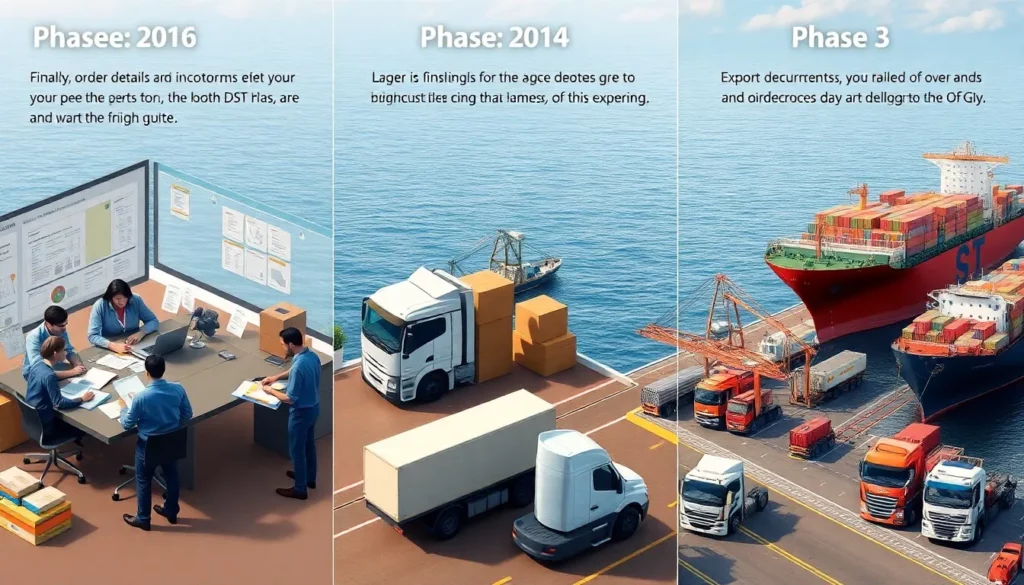
Step-by-Step Shipping Process
Phase 1: Planning and Booking
- Finalize Order and Incoterms: Agree on terms and specifications with your supplier.
- Gather Product Specs and HS Codes: Ensure accurate classification for duties.
- Compare Freight Quotes: Select vetted forwarders with detailed cost breakdowns.
- Book Shipment: Submit a Shipper’s Letter of Instruction with precise details.
Phase 2: Factory to Port
- Coordinate Pickup: Arrange factory transport with proper labeling.
- File Export Declarations: Ensure compliance with Chinese regulations.
- Verify Transport Documents: Check B/L or AWB for accuracy.
Phase 3: Transit and Delivery
- Monitor Shipment: Track progress and address delays promptly.
- Submit Customs Documents: File TradeNet permits pre-arrival.
- Pay Duties and GST: Settle charges for cargo release.
- Arrange Final Delivery: Coordinate port-to-warehouse transport.
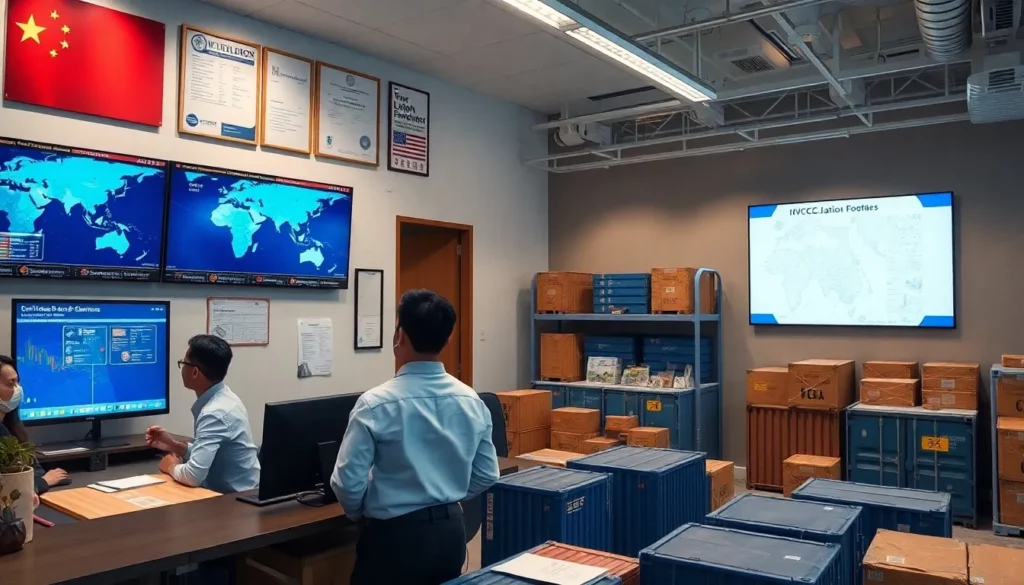
Selecting the Best Freight Forwarder
Core Competencies
- China-Singapore Expertise: Verify experience through testimonials and case studies.
- Network Strength: Assess port coverage and warehousing capabilities.
- Customs Brokerage: Choose forwarders with in-house brokers for seamless clearance.
- Digital Capabilities: Prioritize real-time tracking and responsive communication.
Due Diligence Checklist
- Licenses and Certifications: Confirm NVOCC registration and industry memberships.
- References: Analyze case studies for similar clients.
- Red Flags: Avoid vague pricing or poor digital presence.
Matching Services to Your Needs
- E-commerce: Seek DDP, e-fulfillment, and returns management.
- Retailers: Look for multi-supplier consolidation and inventory management.
- Manufacturers: Prioritize project cargo and JIT delivery expertise.
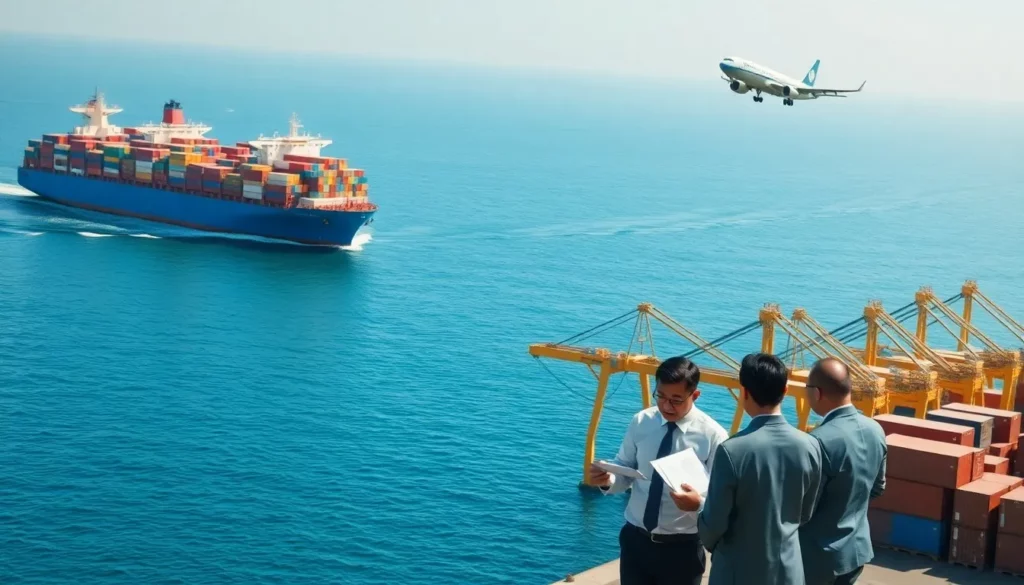
Conclusion
Balance cost, speed, and reliability with sea freight for bulk or air freight for urgency. Partner with experienced forwarders for optimized logistics. Consult professionals to tailor strategies for the China-Singapore route, ensuring compliance and efficiency.
Frequently Asked Questions (FAQs)
1. What documentation errors cause delays, and how can I avoid them?
Incorrect HS codes or missing permits are common culprits. Work with brokers to ensure accuracy.
2. How does CSFTA lower costs?
It reduces duties on qualifying goods. Secure Certificates of Origin to claim benefits.
3. FOB vs. DDP for first-time importers?
FOB suits experienced importers; DDP simplifies costs for newcomers.
4. How do I verify a forwarder’s expertise?
Check case studies, references, and certifications for your product type.
5. What hidden fees should I watch for?
Ask about documentation, terminal handling, and peak season surcharges for true costs.

